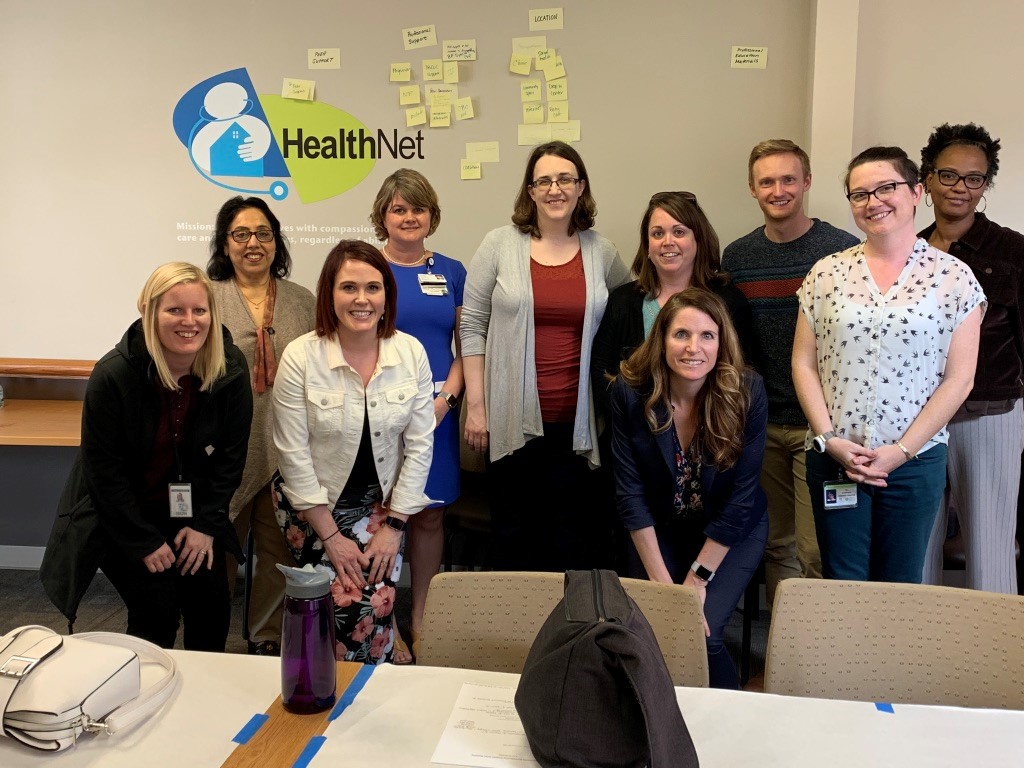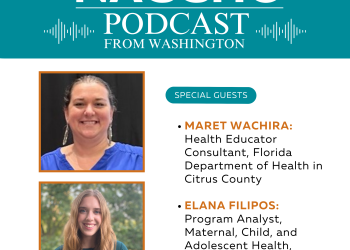 By Julie Patterson, PhD, MBA, RDN, LDN, Northern Illinois University; Lindsay Moore-Otsby, MD, HealthNet; Carrie Bonsack, DNP, CNM, HealthNet, and Kay Johnson, HealthNet
By Julie Patterson, PhD, MBA, RDN, LDN, Northern Illinois University; Lindsay Moore-Otsby, MD, HealthNet; Carrie Bonsack, DNP, CNM, HealthNet, and Kay Johnson, HealthNet
Our story begins with an internal champion, a physician whose personal struggles with breastfeeding inspired the creation of a breastfeeding clinic at HealthNet. She engaged internal and external stakeholders to develop a breastfeeding model of care in collaboration with Northern Illinois University. This model aims to improve breastfeeding support and outcomes at HealthNet, and ultimately could serve as a model for other clinics to improve breastfeeding disparities. This project has succeeded in many ways, particularly in highlighting the need for multipronged, multidisciplinary breastfeeding support efforts not only within the clinic system itself, but also in collaboration with local support services.
Challenge Statement
Indiana ranked 43rd out of 50 states for Infant Mortality Rate (IMR) in 2018, according to the America’s Health Rankings report. Indiana’s IMR was 7.3 infant deaths per 1,000 live births compared to the national average of 5.9. Indiana State Department of Health data shows Marion County’s 2017 overall IMR was 7.5 and its African American IMR was 11.6. This can be visualized as representing 104 empty school buses per year, with most of those seats belonging to African American children. This data highlights health outcome disparities faced by HealthNet’s patient population.
Solution and Results
Breastfeeding reduces the risk of morbidity and mortality for mothers and infants, as shown in a meta-analysis published in The Lancet in 2016 by Victora et al. Centers for Disease Control and Prevention (CDC) data shows the lowest rates of breastfeeding are among African American, Hispanic, lower socio-economic status, single, and younger mothers. Developing an outpatient breastfeeding model is crucial to address maternal breastfeeding concerns during prenatal and early postnatal care. HealthNet is uniquely suited, as it cares for dyads during these key times, and therefore, could positively influence breastfeeding outcomes.
HealthNet is the largest of the Federally Qualified Health Centers in Indiana. It offers extensive healthcare services and community programs in their nine Marion County clinics. All mother-baby dyads deliver at a Baby-Friendly Hospital. The purpose of this project was to create a Breastfeeding Support Model (BSM) using a Policy, Systems and Environment (PSE) framework. Funding was granted by the National Association of County and City Health Officials and Northern Illinois University.
To begin, we conducted an organizational assessment and used a tool created by Bermejo et al. (2015) to measure healthcare professionals’ (HCP) and staff breastfeeding attitudes, beliefs, subjective norms, and behavioral intentions. Information collected during this formative period was utilized to prioritize project objectives within the PSE framework.
For the policy aim, we worked collaboratively with internal and external stakeholders to develop a breastfeeding support policy for employees, patients, and visitors. For the systems aim, a workgroup was created to revise the Electronic Health Record (EMR) to optimize breastfeeding care. Obstetric visit templates were created to measure mothers’ breastfeeding intentions, anticipated duration, perception of support, confidence, and concerns. Newborn templates were created to measure duration and intensity of breastfeeding. The templates were piloted at one center with plans to implement across the system. For the environmental aim, marketing created culturally diverse breastfeeding-friendly screen savers to display on computers in exam rooms. Marketing messages and images were reviewed and approved by the project team and have been translated in the three main languages spoken by HealthNet patients. We also worked collaboratively with the recipients of the CDC’s Racial and Ethnic Approaches to Community Health (REACH) grant at the health department to create a breastfeeding asset map to begin identifying a network of breastfeeding support services available in the county.
In the short term, a baseline assessment of breastfeeding attitudes, beliefs, social norms, and intentions was conducted. Forty medical providers, twenty-six support staff and twenty-one nurses responded. The majority reported positive attitudes and beliefs about breastfeeding, and most recognized their role in positively influencing mothers’ decision to breastfeed.
Opportunities were: (1) knowledge of a policy to support breastfeeding employees and breastfeeding mothers, (2) lack of patient facing breastfeeding images and messages, and (3) a need for breastfeeding training. Additionally, medical providers and nurses reported time limitations as a barrier to providing adequate breastfeeding support.
Outcomes
The intermediate outcome was the creation of a collaboration among members of HealthNet, Northern Illinois University, Marion County Health Department, the Indiana Department of Public Health, and the Indiana Milk Bank. We also plan to expand upon the breastfeeding asset map to better understand the impact of the breastfeeding support services offered. Additionally, creative solutions will be identified to meet breastfeeding training needs of our medical assistants, nurses, and medical providers. The challenge continues to be the time and funding needed to provide breastfeeding training while ensuring schedules are managed to maximize patient care availability. Long-term outcomes include utilizing EMR data to improve breastfeeding support and outcomes.
HealthNet and its community have many breastfeeding support resources in place. A main challenge is creating a cohesive breastfeeding support system from these somewhat fragmented efforts. Further investigation must focus on how to best integrate those services into an overarching model of care. Research must also explore the barriers and facilitators for mothers’ participation in these programs.
HCP and support personnel need proper clinical training to better integrate professional breastfeeding support into patient care. Creative solutions and buy-in from leadership are necessary to deliver adequate, cost-effective training without taking staff away from needed clinical duties.
The literature shows breastfeeding’s health benefits. Further study must explore how to support breastfeeding in the face of countless obstacles. Many patients face financial burdens and return to work or school within weeks of delivery, often with minimal workplace and caregiver lactation support. Assisting mothers with practical prenatal and postpartum guidance is critical and must utilize health literate communication strategies.
Federally Qualified Health Centers have specific processes for policy and procedural approval. Leadership buy-in is predicated on an understanding of the organizational structure and dynamics of competing priorities. This must be considered when planning a BSM with realistic project timelines and objectives.
For more information, please contact Julie Patterson at [email protected] or Lindsay Moore-Otsby, MD or [email protected].




